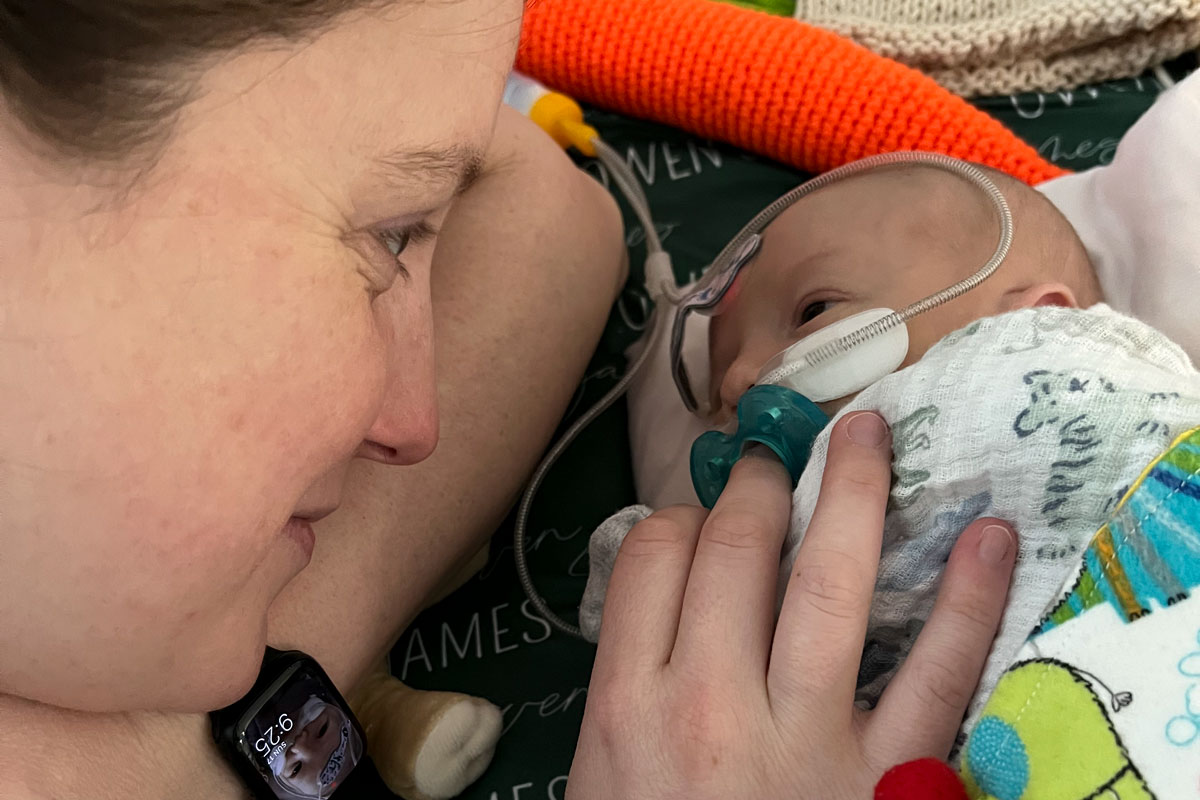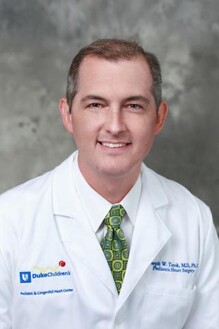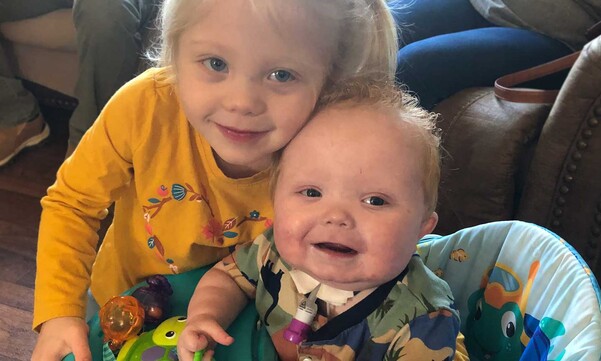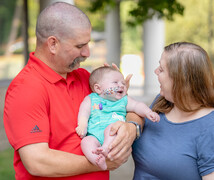Owen Monroe was only 17 days old when he became the world’s first partial heart transplant recipient. The revolutionary surgery was performed in April 2022 by Duke pediatric heart surgeons at Duke University Hospital. One year later, Owen continues to reap the benefits. A study published in January 2024 in the Journal of the American Medical Association shows that Monroe's valves and arteries are functioning well and growing as expected. As a result, Monroe will need fewer surgeries and less immunosuppressant medications over his lifetime.
“This publication is proof that this technology works and can be used to help other children,” said Duke's Joseph W. Turek, MD, PhD, who led the study.
Receiving A Troubling Diagnosis
While she was pregnant, Tayler Monroe and her husband Nick learned their son Owen had a rare congenital heart defect called truncus arteriosus. The condition creates one large blood vessel leading out of the heart instead of two smaller ones. The Monroes were told their son would need several major heart surgeries before he reached puberty. However, shortly after Owen was born, doctors also discovered the valve on the top of his heart was leaking significantly. This meant Owen either needed new heart valves or a heart transplant right away.
“In this day and age, it takes about six months for a child his age to get a heart, and we didn’t have that time,” said Joseph Turek, MD, PhD, Chief of Pediatric Cardiac Surgery at Duke. “Even though we had him listed for a normal heart transplant, we suspected we weren’t going to make it that far.”
You could potentially double the number of hearts that are used for the benefit of children with heart disease.”

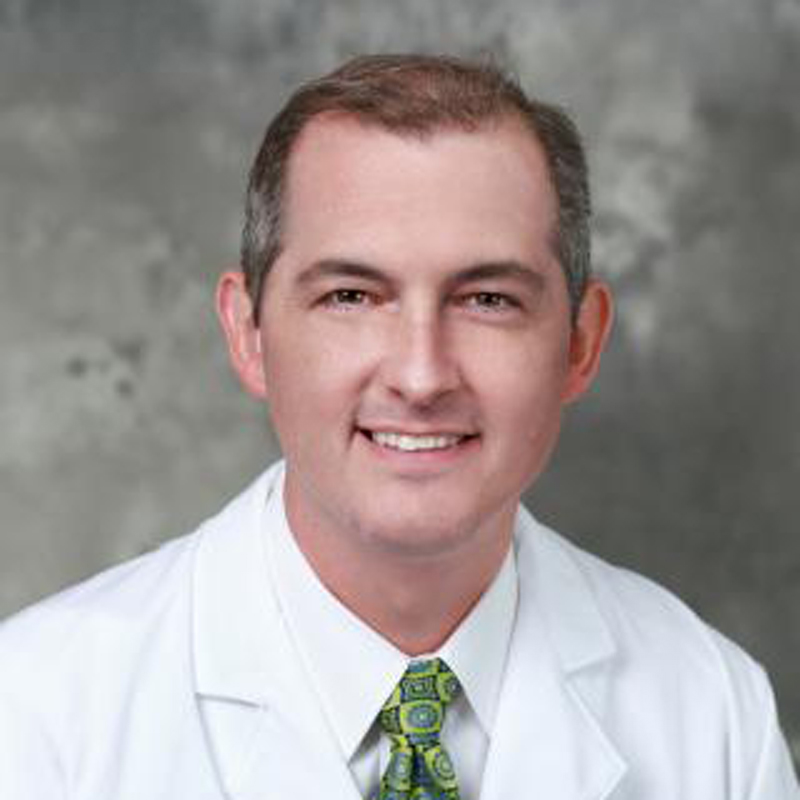
A Different Approach
Dr. Turek and his team offered another option -- a living-tissue partial heart transplant. Previously only done in pigs, this revolutionary surgery would solve two problems. First, it would greatly reduce the amount of time spent waiting on a donor heart. Second, unlike a standard cadaver heart valve, the living tissue would grow along with Owen, meaning he may not need follow-up operations to replace the tissue once it becomes too small.
“It’s a lot on a child to have one heart surgery, let alone to have multiple heart surgeries over a lifespan,” Dr. Turek said.
We Couldn't Ask for a Better Outcome
At just five pounds and less than a month old, Owen underwent the eight-hour surgery. He recovered well and was able to leave the hospital with his parents about seven weeks later.
Within months, his parents said it was hard to notice much difference between Owen and other babies his age. He reached all the normal infant developmental milestones, and his check-ups showed that his heart was functioning well, and his heart valves weren’t leaking.
“I still don’t think I have comprehended the magnitude of the medical and technological advances that [Owen] represents,” said Nick.
“We couldn’t ask for a better outcome to this entire story,” Tayler said.

